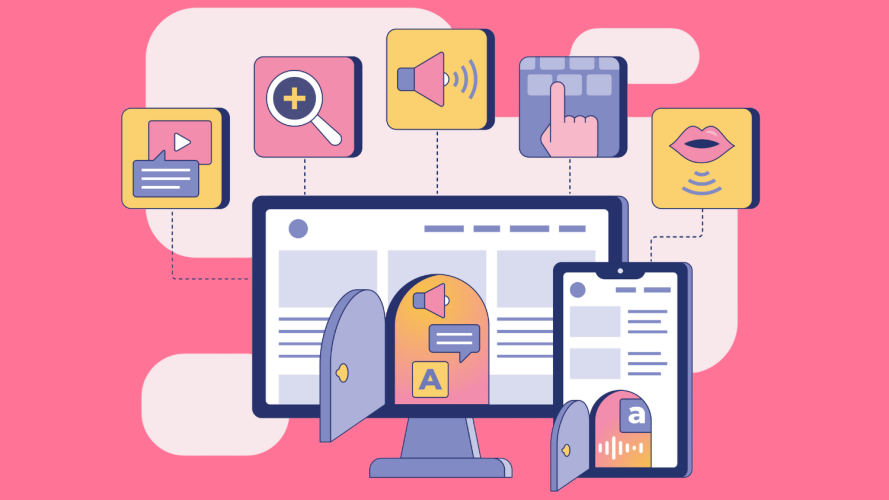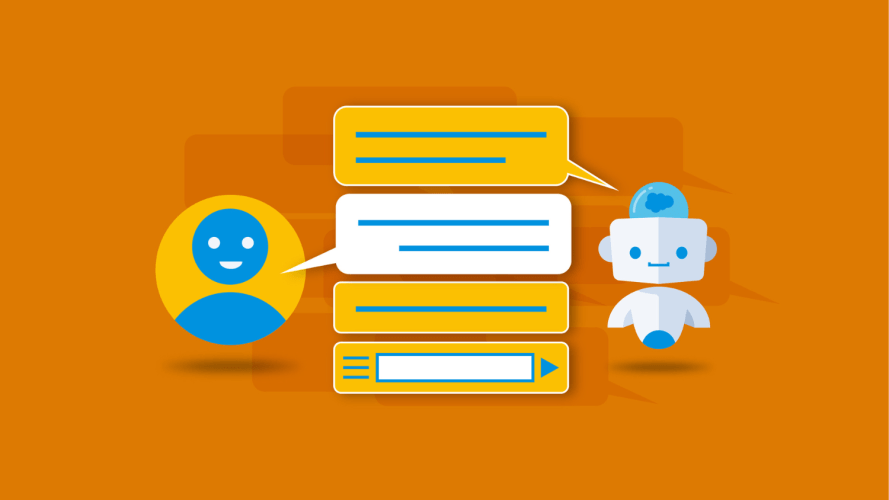3 Tips to Design Trusted Generative AI

In design, focusing on day-to-day usability and collaboration with your team – and AI – are essential.

Kat Holmes
Generative AI has captured the imagination of business leaders and now it’s time to put it into practice. In a recent survey, 68% of employees say generative AI will help them better serve customers. But there’s a significant gap between AI’s promise and how to make it usable for people in their day-to-day work. This is where design can help translate grand possibilities into practical product choices.
Usability is one of the most important criteria for designing trusted generative AI. Some questions that necessitate usability are:
- How long will a person wait for a response from AI before they start to wonder if the system is broken? (Answer: about 5 seconds.)
- When is it more efficient to offer a simple button to activate generative AI, rather than have a conversational chat with it?
- How can a beginner or non-technical person effectively prompt generative AI to deliver valuable results?
Generative AI is so much more than a souped-up chatbot. It’s a collaborator. It’s a platform of specialized and complex skills that you can tailor and employ toward any goal that you choose. However, collaboration is built on trust and people need to build trust in stages. As you introduce AI into your customer and employee relationships, every interaction with AI needs to earn and reinforce each person’s trust.
Salesforce Design counts relationships among the building blocks of business and social value. Given AI’s transformative potential, we’re reflecting on how the human-to-computer relationship needs to evolve. It’s a big question with no simple answers. But, we can begin with a few practical starting points for any business:
1. Treat generative AI as a new class of users
AI certainly is not human, but it will have user-like needs. AI will start to operate with more autonomy to complete complex tasks. Depending on what a person asks it to do it will make decisions and move through multi-step workflows. It will learn from mistakes and continuously adapt to improve.
What you can do:
- Define robust user scenarios: Predicting how generative AI will interact within different contexts can help you anticipate potential issues and proactively plan solutions. For example, how would generative AI react if it’s presented with incomplete data or conflicting instructions? By defining these kinds of scenarios, with AI as a user, you can ensure a smoother and more efficient experience.
- Define clear boundaries: Just like any other user, AI will encounter situations where it may not know the right course of action. It must know what it can and can’t do. Some of this will be defined by your data management and processes, but the user experience can also provide checks and balances to AI’s skills. Check out our Prompt Studio work to create a trust boundary for generative AI and our principles for trusted AI from our Office of Ethics and Humane Use.
2. Match people’s goals to AI skills
Generative AI performs best when it has clear goals and objectives. It also learns from mistakes and improves over time. This requires some matchmaking. Your customer-facing experts need simple and accessible ways to tell AI how it can help them and your business.
What you can do:
- Make sure people understand what AI can do for them: Using Prompt Templates, you can add simple buttons to activate generative AI right where work is happening in Salesforce. For example, AI can help sales experts draft personalized emails for each lead by placing a “Draft Email” button right alongside their list of contacts. This means sales experts who have a special knack for bringing new customers into your business can collaborate with AI to support their work, without being an expert in AI. Empowering your team with AI is only possible if they know what to expect from these new technologies.
- Make sure AI understands a person’s goal: This requires a way for employees or customers to set goals and ensure AI meets those goals. Conversational interfaces are one way to achieve this, but open ended conversations don’t always make great prompts for generative AI. Sometimes offering a user a small set of options to choose from is even more effective. This can include asking a person to give feedback on whether or not the AI provided a useful response. Giving users a simple way to steer and correct generative AI helps it correct mistakes and improve over time.
3. Strengthen how your team collaborates, now with AI as a teammate
In the Slack State of Work report, 77% of desk workers say automating routine tasks would improve their productivity. And those who are more productive are 242% more likely to be using AI. When people collaborate with one another, they need to understand their shared goal and how each of them contribute to reaching that goal. Practically speaking, AI will become another team member in these collaborations. Human roles and AI roles will intertwine. Together, they can move from simple task completion, like drafting a sales email, to more complex tasks, like optimizing and orchestrating strategic investments.
What you can do:
- Establish clear communication channels: As with any team, consistent communication is critical to success. Make sure there’s a straightforward process in place for your team to interact with AI and learn how to communicate with it effectively. Make it easy for people to share what they’ve learned with one another.
- Foster an AI-ready culture: Encourage your teams to view AI as a collaborator. Promote a culture of continuous learning, where team members can explore AI’s capabilities and leverage its strengths to achieve their goals.
Generative AI will continue to shift from a promising concept to a practical solution. Salesforce’s approach places trust at the forefront, starting with usability, to ensure you can embrace it with confidence. The journey to bring generative AI into your teams is not merely technical; it’s deeply human. It involves fostering trust, ensuring ethics, and enhancing collaboration between people.



























